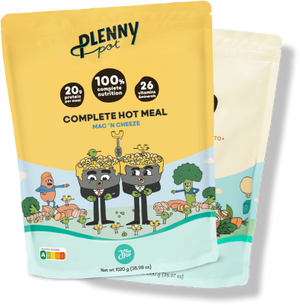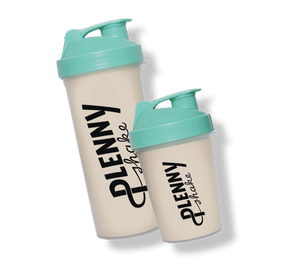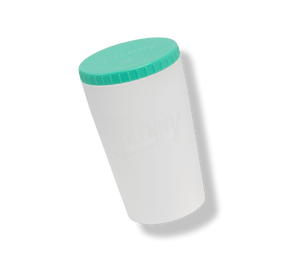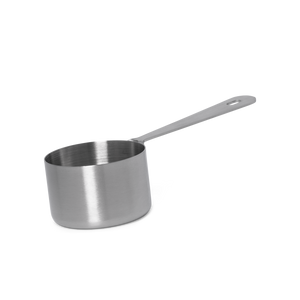
Plenny Pot is a healthy, convenient, and nutritionally complete instant hot meal that is balanced in nutrients (high in protein,100% plant-based, a source of fibre and low in sugar). It also contains pro- and prebiotics for a healthy gut.
We topped it all off with our high-quality mix of 26 essential vitamins and minerals your body needs to stay healthy.
Plenny Pot is our first savoury meal that can be enjoyed warm! Just add boiling water, wait a little and enjoy an instant hot and nutritious lunch or dinner!
Plenny Pot comes in 6 different and delicious meals: Creamy Cajun Pasta, Tikka Masala, Vegetable Korma Rice, Satay Noodles, Mushroom Buckwheat Risotto and Mac n’ Cheeze. They provide you with 400 calories of which 20% comes from protein, 19-32% from fat, 45-56% from carbohydrates, and 6-12% from fibres, depending on the flavour.
Did we pique your curiosity? Keep reading if you want to know more!
Macronutrients
• Proteins
• Fats
• Carbohydrates
Nutritional breakdown
|
Per prepared portion (~300g) |
Creamy Cajun Pasta v1.0 |
Tikka Masala Lentils v1.0 |
Vegetable Korma Rice v1.0 |
Mushroom Buckwheat Risotto v1.0 |
Satay Noodles v1.0 |
Mac 'N' Cheeze v1.0 |
Lentil Bolognese |
||||||||
|
Nutrition |
Value |
%RI |
Value |
%RI |
Value |
%RI |
Value |
%RI |
Value |
%RI |
Value |
%RI |
Value |
%RI | |
|
Energy |
400 kcal |
20% |
400 kcal |
20% |
400 kcal |
20% |
400 kcal |
20% |
400 kcal |
20% |
400 kcal |
20% |
400 kcal |
20% |
|
|
Protein |
20 g |
40% |
20 g |
40% |
20 g |
40% |
21 g |
41% |
20 g |
40% |
20 g |
40% |
20 g |
40% |
|
|
Fat |
13 g |
19% |
12 g |
17% |
11 g |
16% |
13 g |
19% |
13 g |
19% |
14 g |
20% |
8,4 g |
12% |
|
|
From which saturated fats |
2,1 g |
11% |
4,5 g |
23% |
3,1 g |
16% |
4,6 g |
23% |
2,7 g |
14% |
5,4 |
26% |
0,40 |
2% |
|
|
Carbohydrate |
45 g |
17% |
50 g |
19% |
52 g |
20% |
47 g |
18% |
46 g |
18% |
45 g |
17% |
56 g |
22% |
|
|
From which sugar |
11 g |
12% |
11 g |
12% |
5,2 g |
6% |
7,9 g |
9% |
7,4 g |
8% |
5,5 g |
6% |
13 g |
14% |
|
|
Fibres |
12 g |
8,9 g |
6,5 g |
6,3 g |
6,5 g |
8,4 g |
9,6 g |
||||||||
Ingredients
|
Creamy Cajun Pasta |
Tikka Masala Lentils |
Vegetable Korma Rice |
|
|
|
|
Mushroom Buckwheat Risotto |
Satay Noodles |
Mac n' Cheeze |
|
|
|
| Lentil Bolognese | ||
|
||
Macronutrients
Proteins
Proteins are essential in your diet, being the building block of essential compounds in your body and giving your body its structure. Since we cannot go without this nutrient, each portion of Plenny Pot provides 20 grams of protein so that you hit the daily recommended intakes. You can read more about how much protein you really need here! A meal such as Plenny Pot, which is high in protein can make you feel more satiated throughout the day because proteins take longer to digest than carbohydrates. The main protein sources in the meals are pea and soy protein. Want to read more about vegan protein sources? Read this article! (1,2)
Fats
Most of the fats in the Plenny pot come from sunflower oil. Sunflower oil has mainly omega-6 which is an essential polyunsaturated fat. Your body can't make omega-6 on its own; the reason for which it should be present in your food. Because we don’t want to leave you hanging with the omega-3’s, we also add flaxseed because of its high content of α-Linolenic acid (omega-3) and linoleic acid (omega-6). Each Plenny Pot contains 1400mg of omega 3. Lastly, coconut milk adds up to the total fat content. Coconut milk is often put in a bad light due to its saturated fatty acids. However, it consists of medium-chain triglycerides (MCT), which ongoing research suggests have a positive effect on weight loss, fat loss, energy-burning and improving your gut environment (3–11).
Carbohydrates
Carbohydrates are a nutrient that provides your body with glucose, the main energy source for the brain (8). The group of carbohydrates can be split up into categories such as sugars, fibres and starches, providing you with this essential nutrient. A required daily intake of 130 grams per day for adults has been established by The Institute of Medicine (IOM), to provide the brain with this fuel (9). According to the EFSA, the intake of total carbohydrates should range from 45-60%E, which means 225-300 grams of carbohydrates per day to cover all your body requirements. Plenny Pot contains 45-52 grams of carbohydrates per meal, which makes a diet solely based on this meal provide you with a sufficient amount of this nutrient. The carbohydrates present in the Plenny Pot are a combination of complex and easier-to-digest ones. More specifically, white rice, glucose syrup and maltodextrin are added and function as a form of immediate energy. To provide long-lasting energy and to prevent a sugar peak or dip, some complementary sources have been added: potato starch, which is a resistant starch that functions as fermentable fibre. The Creamy Cajun Pasta and Satay Noodles contain wholemeal pasta, which also contributes to a slower digestion and blood glucose rise. Resistant starch is shown to improve insulin sensitivity and lower blood glucose levels after meals. Moreover, it feeds the beneficial bacteria in the gut and contributes to a healthful gut environment.
Fibres
To smoothen your digestive system, some extra fibres have been added to the Plenny Pot in the amounts of 6,3-12 grams per portion. This amount is based on recommendations by authorities such as the Dutch Health Council and the American Heart Association, defining 30-40 grams of fibre per day or 25 grams of fibre in a 2,000 calorie diet (15,16). The main sources of fibres in the Plenny Pot are chicory root fibre, wholemeal pasta, potato starch, flaxseed and pulses. They help in lowering blood pressure and smoothen your digestion. In particular chicory root fibre is added to achieve a wider variety of fibre sources and upgrade the number of fibres per portion. This results in the Tikka Masala, Mushroom Buckwheat Risotto, Satay Noodles, and Vegetable Korma rice being a source of fibre and Creamy Cajun pasta being high in fibre! (12,20–22)
Moreover, probiotics are added because of their ability to possibly enhance and strengthen our gut microbiome. The probiotics have a symbiotic effect with the high fibre content of Plenny Pot. This means that probiotics become more resistant and provide a more substantial health effect thanks to the fibres they eat and live from. You can read more about gut health in this article (23).
Micronutrients
The vitamin and mineral mix that we added provides all 26 needed micronutrients. We use the most bioavailable forms of micronutrients so that your body can easily absorb each bit of all the vitamins and minerals at the highest possible rate. For instance, we add vitamin D in the form of cholecalciferol (D3) and vitamin K in the form of menaquinone-7 (K2 MK7). You can read more about our micronutrient mix here.
It is discussed that vitamins can be degraded by heat so in order to ensure that we are providing you with the correct amounts, overages have been included into the formula to incorporate this loss. Overages can range from 20-50% depending on the vitamin. Minerals, however, are not affected by heat.
Besides the nutritional advantages of Plenny Pot, they get their tastiness from a bunch of spice and dried vegetables. Can’t wait to try out our first savoury meal? Make your order here!
|
Vitamins-Minerals |
Per portion |
RI* (%) |
|
|
Vitamin A |
160 |
μg |
20%* |
|
Vitamin D |
5.0 |
μg |
100%* |
|
Vitamin E |
4.0 |
mg |
33%* |
|
Vitamin K |
16 |
μg |
21%* |
|
Vitamin C |
40 |
mg |
50%* |
|
Thiamin |
0.40 |
mg |
36%* |
|
Riboflavin |
0.32 |
mg |
23%* |
|
Niacin |
3.6 |
mg |
23%* |
|
Vitamin B6 |
0.40 |
mg |
29%* |
|
Folic Acid |
60 |
μg |
30%* |
|
Vitamin B12 |
3.2 |
μg |
128%* |
|
Biotin |
10 |
μg |
20%* |
|
Pantothenic acid |
1.2 |
mg |
20%* |
|
Potassium |
400 |
mg |
20%* |
|
Chloride |
279 |
mg |
35%* |
|
Calcium |
185 |
mg |
23%* |
|
Phosphorus |
140 |
mg |
20%* |
|
Magnesium |
75 |
mg |
20%* |
|
Iron |
3.2 |
mg |
23%* |
|
Zinc |
2.0 |
mg |
20%* |
|
Copper |
0.40 |
mg |
40%* |
|
Manganese |
1.0 |
mg |
50%* |
|
Selenium |
18 |
μg |
33%* |
|
Chromium |
8.0 |
μg |
20%* |
|
Molybdenum |
13 |
μg |
26%* |
|
Iodine |
30 |
μg |
20%* |
*% of the daily reference intake for vitamins and minerals
Last but not least, Probiotics
Probiotics are added because of their ability to possibly enhance and strengthen our gut microbiome. The probiotics have a symbiotic effect with the high fibre content of Plenny Pot. This means that probiotics become more resistant and provide a more substantial health effect thanks to the fibres they eat and live from. You can read more about gut health in this article (23).
Can’t wait to benefit from the tasty and nutritional advantages of the Plenny Pot v1.0? Try it today!
Sources
- WHO | Protein and amino acid requirements in human nutrition [Internet]. WHO. World Health Organization; [cited 2020 Apr 7]. Available from: http://www.who.int/nutrition/publications/nutrientrequirements/WHO_TRS_935/en/
- Pendick D. How much protein do you need every day? [Internet]. Harvard Health Blog. 2015 [cited 2020 Apr 9]. Available from: https://www.health.harvard.edu/blog/how-much-protein-do-you-need-every-day-201506188096
- St-Onge M-P, Jones PJH. Greater rise in fat oxidation with medium-chain triglyceride consumption relative to long-chain triglyceride is associated with lower initial body weight and greater loss of subcutaneous adipose tissue. Int J Obes Relat Metab Disord J Int Assoc Study Obes. 2003 Dec;27(12):1565–71.
- Baba N, Bracco EF, Hashim SA. Enhanced thermogenesis and diminished deposition of fat in response to overfeeding with diet containing medium chain triglyceride. Am J Clin Nutr. 1982 Apr;35(4):678–82.
- Dulloo AG, Fathi M, Mensi N, Girardier L. Twenty-four-hour energy expenditure and urinary catecholamines of humans consuming low-to-moderate amounts of medium-chain triglycerides: a dose-response study in a human respiratory chamber. Eur J Clin Nutr. 1996 Mar;50(3):152–8.
- Rial SA, Karelis AD, Bergeron K-F, Mounier C. Gut Microbiota and Metabolic Health: The Potential Beneficial Effects of a Medium Chain Triglyceride Diet in Obese Individuals. Nutrients [Internet]. 2016 May 12 [cited 2020 Oct 26];8(5). Available from: https://www.ncbi.nlm.nih.gov/pmc/articles/PMC4882694/
- St-Onge M-P, Bosarge A. Weight-loss diet that includes consumption of medium-chain triacylglycerol oil leads to a greater rate of weight and fat mass loss than does olive oil. Am J Clin Nutr. 2008 Mar;87(3):621–6.
- St-Onge M-P, Mayrsohn B, O’Keeffe M, Kissileff HR, Choudhury AR, Laferrère B. Impact of medium and long chain triglycerides consumption on appetite and food intake in overweight men. Eur J Clin Nutr. 2014 Oct;68(10):1134–40.
- Balić A, Vlašić D, Žužul K, Marinović B, Bukvić Mokos Z. Omega-3 Versus Omega-6 Polyunsaturated Fatty Acids in the Prevention and Treatment of Inflammatory Skin Diseases. Int J Mol Sci [Internet]. 2020 Jan 23 [cited 2020 Aug 28];21(3). Available from: https://www.ncbi.nlm.nih.gov/pmc/articles/PMC7037798/
- Boston 677 Huntington Avenue, Ma 02115 +1495‑1000. Types of Fat [Internet]. The Nutrition Source. 2014 [cited 2020 Apr 9]. Available from: https://www.hsph.harvard.edu/nutritionsource/what-should-you-eat/fats-and-cholesterol/types-of-fat/
- WHO | Fats and fatty acids in human nutrition [Internet]. WHO. World Health Organization; [cited 2020 Apr 7]. Available from: https://www.who.int/nutrition/publications/nutrientrequirements/fatsandfattyacids_humannutrition/en/
- EFSA. Nutrition claims [Internet]. Food Safety - European Commission. 2016 [cited 2020 Oct 9]. Available from: https://ec.europa.eu/food/safety/labelling_nutrition/claims/nutrition_claims_en
- Englyst HN, Kingman SM, Hudson GJ, Cummings JH. Measurement of resistant starch in vitro and in vivo. Br J Nutr. 1996 May;75(5):749–55.
- Wang X, Brown IL, Evans AJ, Conway PL. The protective effects of high amylose maize (amylomaize) starch granules on the survival of Bifidobacterium spp. in the mouse intestinal tract. J Appl Microbiol. 1999;87(5):631–9.
- Topping DL, Fukushima M, Bird AR. Resistant starch as a prebiotic and synbiotic: state of the art. Proc Nutr Soc. 2003 Feb;62(1):171–6.
- Topping DL, Clifton PM. Short-chain fatty acids and human colonic function: roles of resistant starch and nonstarch polysaccharides. Physiol Rev. 2001 Jul;81(3):1031–64.
- Wong JMW, de Souza R, Kendall CWC, Emam A, Jenkins DJA. Colonic health: fermentation and short chain fatty acids. J Clin Gastroenterol. 2006 Mar;40(3):235–43.
- Jenkins DJ, Wolever TM, Taylor RH, Barker H, Fielden H, Baldwin JM, et al. Glycemic index of foods: a physiological basis for carbohydrate exchange. Am J Clin Nutr. 1981 Mar 1;34(3):362–6.
- Lamothe LM, Lê K-A, Samra RA, Roger O, Green H, Macé K. The scientific basis for healthful carbohydrate profile. Crit Rev Food Sci Nutr. 2019 Apr 12;59(7):1058–70.
- Carlson JL, Erickson JM, Lloyd BB, Slavin JL. Health Effects and Sources of Prebiotic Dietary fibre. Curr Dev Nutr [Internet]. 2018 Jan 29 [cited 2020 Sep 2];2(3). Available from: https://www.ncbi.nlm.nih.gov/pmc/articles/PMC6041804/
- Medicine I of. Dietary Reference Intakes for Energy, Carbohydrate, fibre, Fat, Fatty Acids, Cholesterol, Protein, and Amino Acids [Internet]. 2002 [cited 2020 Apr 9]. Available from: https://www.nap.edu/catalog/10490/dietary-reference-intakes-for-energy-carbohydrate-fiber-fat-fatty-acids-cholesterol-protein-and-amino-acids
- Whole Grains, Refined Grains, and Dietary Fiber | American Heart Association [Internet]. [cited 2020 Apr 9]. Available from: https://www.heart.org/en/healthy-living/healthy-eating/eat-smart/nutrition-basics/whole-grains-refined-grains-and-dietary-fiber#.WVVm4RMrIdU
- Holscher HD. Dietary fiber and prebiotics and the gastrointestinal microbiota. Gut Microbes. 2017 04;8(2):172–84.






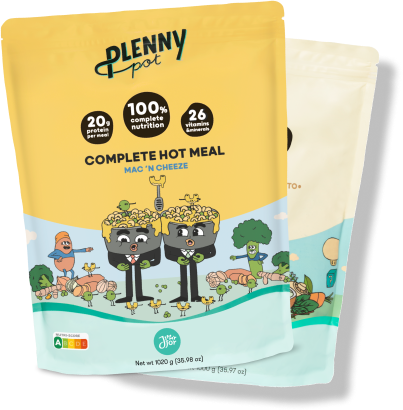

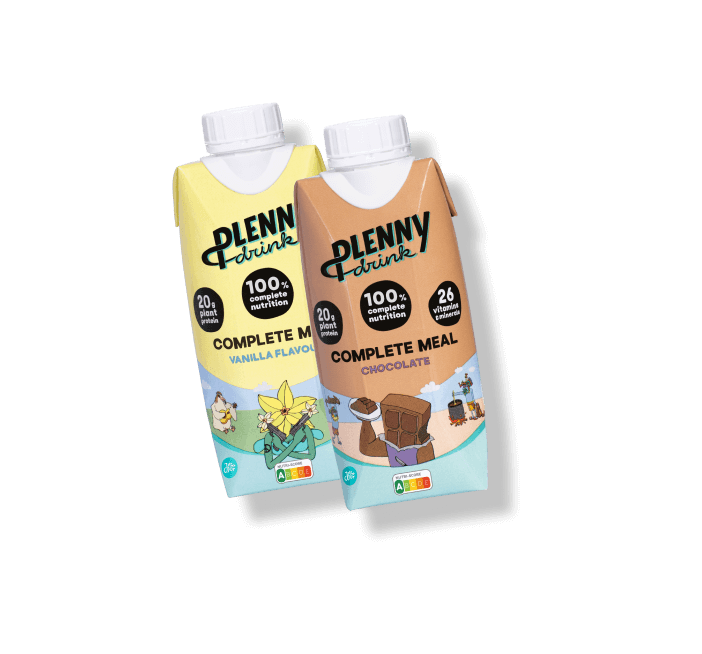












 Product added to cart
Product added to cart



